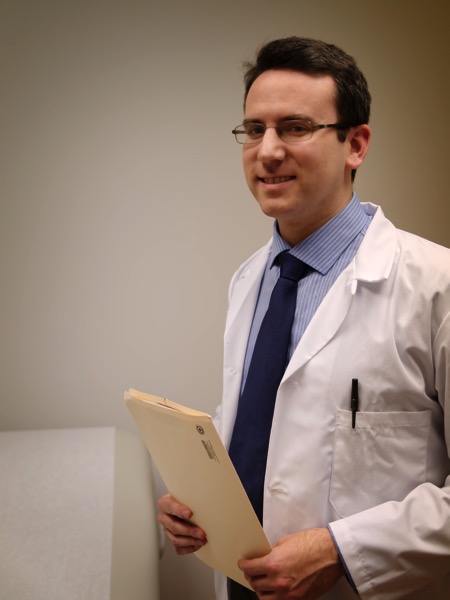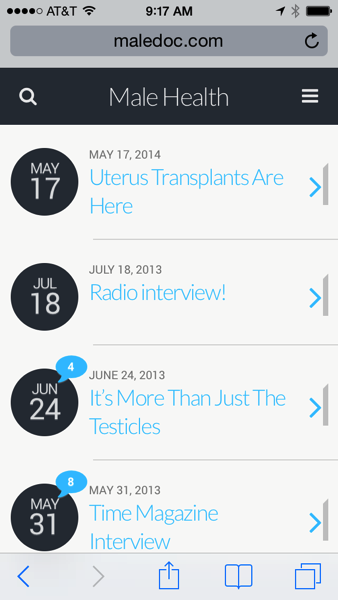Follow me on Twitter. Seriously.
It’s been a little over five years. I wrote my first post on this blog, The Mysteries of Funny Looking Sperm, April 18, 2010. At the time, this blog was very much an experiment, and I had no idea how it would work. In my daily life, I see a lot of men with difficulties having children or other male health problems, and they don’t tell you anything about that when you take “sex ed” in high school. Lots of men share the same problems, and I would say the same things to different men throughout the day. So I thought that I would put my end of those conversations in a general way on a blog, so that men around the world with questions about male reproductive health might find some answers.
My first few blog posts came from those common conversations. I see a lot of men with male endocrine problems, so I wrote a few posts on how the endocrine system works in a man and how it can be fixed if needed. I wrote about concerns like, can a man’s underwear cause problems with his sperm? At first, I shut off comments after two weeks, but I quickly realized that many people found my posts not by reading the blog start to finish, but through a search for a specific concern. That makes a lot of sense: I do that, too. People would be coming at a post weeks, months, or even years after I wrote it. My third post on April 28th, 2010, How Clomid Works in Men, is still my most visited one with 874 comments as of today.
After a while, people started asking great questions in the comments. Sometimes I could answer them in a couple of lines in the comments section, but some required longer answers. I added posts for a few of these great questions. Understandably, although I tried to make it very prominent in the FAQ, people would still ask me medical questions about themselves and their loved ones. It’s really frustrating, but I can’t answer them. I don’t have the basic information through the web that all doctors need to make a diagnosis and treat a patient, which includes a physical examination. I need to see people in person to be their doctor.
As the blog evolved, I began posting about news events, important scientific studies, and general items of interest in male health. But most people still come across the blog by searching for a specific problem or question, and that’s the way it mainly seems to work. So for those who read a post from years past and have a question, I’ll often recommend reading the comments and other posts on the blog, as the answers are usually there.
But if you’re interested in male health, and you want a more up-to-date stream of information, then follow me on Twitter. I post pretty frequently there, often with links to important news articles about male health and the other parts of my job in science, engineering, and education. You’ll even see my human side from time to time. I’ll of course still write here on this blog when the need for more words arises.
See you in the Twitterverse!


